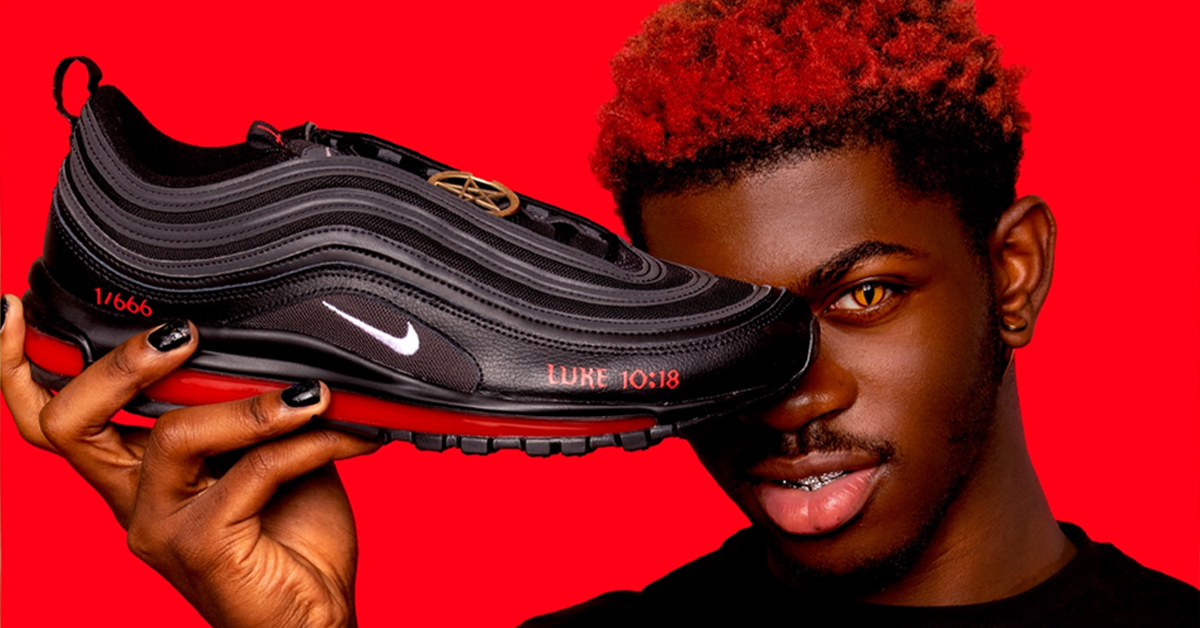Table of Contents Show
Lil Nas X has taken the world by storm with his latest initiatives to promote his newest single, “MONTERO (Call Me By Your Name),” and his upcoming album releasing this summer. Lil Nas X has drawn both positive and negative attention to the song through promotional efforts like comedic TikToks first referencing the song to the extraordinary visuals for his music video and a sneaker collaboration that led to a lawsuit. Overall it’s safe to say “MONTERO (Call Me By Your Name)” will not be forgotten in 2021.
The Power Of Twitter And TikTok
Our first introduction to Lil Nas X’s hit single was on July 9th, 2020, when Nas tweeted a video of himself lip-syncing a snippet of what many would come to know as “MONTERO (Call Me By Your Name). After generating some free self-advertisement through Twitter, Nas transitioned the song to TikTok, made the song clip available as a TikTok song which creators could use in their videos from his original tweet in order to generate wider anticipation for the song’s full release. For instance, in a video where Nas did an acting challenge, he makes sure to include the audio clip from his song in the background despite it not relating to anything happening in the video.
Nas used the same strategy to promote his previous single, “HOLIDAY.” The Christmas-themed song would come to fans in snippets throughout the month and wouldn’t be released fully until November 12th, 2020, with a music video as well. Both songs would serve as examples of Nas opening up more about his sexuality and making efforts to normalize homosexuality in the music industry. The song currently sits at the number one spot on Spotify’s Global Chart.
What “MONTERO (Call Me By Your Name)” Is All About
Lil Nas X’s video does not shy away from creating controversy. The artist’s video revolves around a biblical world called Montero featuring Nas portraying various biblical characters such as serpents, Adam and Eve, commoners, and Satan himself. The name of the world is a reference to Lil Nas X’s real name, Montero Lamar Hill. The scene that generated the most controversy is when Nas seduces Satan in the video by giving him a lap dance and eventually snapping his neck and becoming the new demon in power. While this is a literal explanation of the visuals in the music video, the song itself speaks on a snippet of Lil Nas X’s love life this past summer. The video opens with Nas narrating, “In life, We hide the parts of ourselves we don’t want the world to see. We lock them away, we tell them “No,” we banish them. But here, we don’t. Welcome to Montero.”
This theme of revealing one’s true self is largely what the song is all about. The “(Call Me By Your Name)” title portion is largely in reference to the 2017 coming-of-age romantic drama film, Call Me by Your Name. The movie features a line that resonated with Nas in relation to confronting one’s homosexuality and calling each other by their names and for who they really are rather than masking their true feelings, “Call me by your name and I’ll call you by mine.” In his appearance on the Genius YouTube Channel, Lil Nas X opens by saying, “It was the most real, and the most vulnerable at times, I’ve ever been on a song…It has so many key points [like] even surrounding the song, like even outside the song itself. Which is why it’s going to be super important to me and a lot of other people.”
Lil Nas’s lyrics also serve to normalize sexual activities he engages in himself. This is not the first time Nas incorporated lyrics opening up these conversations as “HOLIDAY” also contained lyrics in which Nas referenced the innuendo of being a ‘bottom’ but still topping the charts and ‘topping’ in his personal life. While some may find his references “out of line,” Nas’s embracement of his homosexuality is admirable as his purpose is to be himself and openly express these inner thoughts musically.
Depictions Of Demons Or Hell In Media
Despite the song’s deeper meaning, many could not get past Nas’s actions with Satan in his music video. Nas uses biblical imagery to address homophobia directly and counter religious systems that have been used to oppress queer people. Depictions of demons or devil-affiliated symbols are nothing new that has been parodied or portrayed in media. Lil Nas’s portrayal here is meant to embrace his homosexuality and openly express himself rather than contribute to tropes we see in media today. An example of this can be seen in Comedy Central’s “South Park,” which has constantly parodied Satan, stripping away his evil and turning him into an openly gay character that invades Earth for sometimes harmless events like throwing an expensive Halloween party.
This portrayal uses the “Flaming Devil” trope. This further contributes to negative stereotypes of homosexuality and does so as comic relief. People seem to have no problem combining homosexuality with demons when it’s in a ‘comedic’ form rather than openly accepting queerness. It is more likely that the media will contribute to these stereotypical depictions than confront them and attempt to normalize them the way Nas did by making himself Satan at the end of the video. His main priority is to normalize queer expressivity in music. His use of demon imagery was a clever way of clapping back at people who oppressed him as a teenager.
Metal band Slayer has continuously used the Pentagram in their logo and has featured demonic figures on their album covers as well as their merchandise. Did this make Slayer satanic or followers of Satan? No, not at all, the use of imagery was largely due to the band’s anti-religious themes, and the use of a Pentagram also helped generate more attention to the group. In fact, Tom Araya, lead singer, and bassist of the group, was Christian himself. In this example, we see an acceptance of demon affiliation, but if it were to be tied in with homosexuality, people lose their minds.
Collaborative Controversy: The Satan Air Max 97s
To further promote his single, Lil Nas X collaborated with art collective product studio MSCHF and produced the world-renowned “Satan Shoes,” which may go down as the most controversial shoe of 2021. This was largely due to the sneaker featuring a mixture of a real drop of blood with an additional liquid inside the bubble of the sneaker. It’s important to note that this was not the first time MSCHF made headlines for creating a shoe, as they were also behind the infamous “Jesus Shoe” or “Holy Water Shoe,” which had holy water in the air bubble of the shoes. The difference between this pair and Lil Nas X’s pair is that Nike did not sue MSCHF for their holy water pair but was quick to take legal action against Nas and MSCHF.

This was largely due to assumptions online that Nike was directly involved with the release of the sneaker. Since this was not the case, Nike quickly claimed the shoe was trademark infringement, delusive, had a false designation of origin, and served as unfair competition. The sneaker was also released in a limited quantity of 666 pairs and retailed for $1,018, referencing biblical verse Luke 10:18, which addresses Satan falling from heaven. MSCHF lost the case despite arguing that the sneakers aren’t simply shoes but are collectible pieces of art, as well as arguing that they never advertised the product as a collaboration with Nike. Prior to the lawsuit, promotional pairs of the shoe were given to online influencers and Youtubers who agreed to showcase the shoe, review it, and give their own personal takes.
Can’t Nobody Tell Him Nothin’
Overall after the backlash that surrounded “MONTERO (Call Me By Your Name)” did not stop Lil Nas X from continuously promoting the song. Whether it was disagreeing with his music video visuals or being against his sneaker collaboration, Nas kept the momentum and embraced the mixed feedback he received from fans, haters, and celebrities. Here are a few examples of Nas not backing down and sticking by his music.
While “Old Town Road” helped give Nas a platform, he has demonstrated he is not a one-trick pony. I, for one, can’t wait to see what the rest of Lil Nas’s album will consist of, and I look forward to more lyrics or expressiveness to come from the artist. One can’t deny how much attention was generated for this single.


